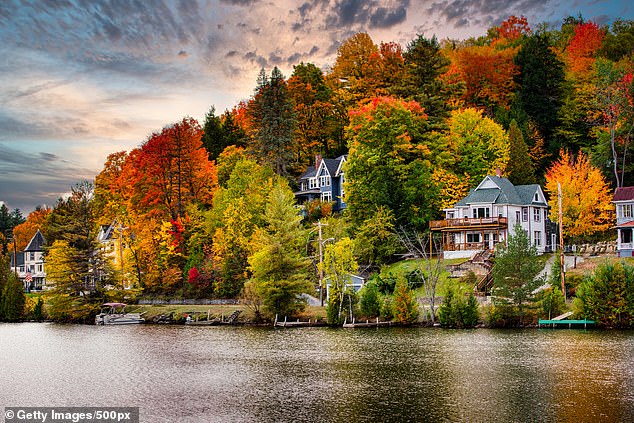It’s scorching hot 10 a.m. at New York’s Moynihan Train Hall, and platform seven is abuzz with excitement. The silver Amtrak train, like a stretched Airstream, purrs quietly along the tracks as commuters haul backpacks and suitcases up the steps into the cars.
After a summer shutdown for track renovations, the daily U.S. cross-border train between New York and Montreal is back in operation, a 12-hour journey through the scenic Hudson River Valley and the foothills of the Adirondacks.
Unlike most of my fellow travellers, I’ll be hopping off in Albany for a few days exploring upstate New York, before re-boarding in Plattsburgh to head into Canada. The towns and villages that dot the Hudson River Valley are popular with weekend-trippers, but I’ll be heading further afield to explore the Adirondacks. My first stop is Lake George, known as the Queen of Lakes – which, when there are more than 3,000 of them in the region, is quite an honour. Stretching for more than 50km, its shores are dotted with small resorts and palatial mansions, dating back to when the lake was a summer playground for millionaire industrialists in the Gilded Age.
Leafy splendor: Annabelle Thorpe rides the Amtrak train between New York and Montreal. Along the way, she passes Lake Placid in the Adirondacks (pictured)
With little time to explore, I book a ticket for the Minnie Ha-Ha, a traditional steamboat with a piercing whistle that announces our departure to everyone within ten miles. As we pass a resort with rows of empty deckchairs, the captain speaks up: “They like to take a nap there,” he says, blowing the steam whistle. “How about we wake them up?”
Back on dry land, we continue to Gore Mountain, where gondolas carry mountain bikers and hikers in summer and skiers in winter to the top station at more than 3,000 feet. As the cabin glides upward, I am reminded that the American landscape is on a different scale than our own: vast forested mountains ripple around aquamarine lakes.
It’s a feeling that grows as I head further north, through large swaths of forest to the town of Lake Placid, famous for hosting the Winter Olympics in 1932 and 1980. Main Street, picturesque with cafes, hotels and shops, overlooks Mirror Lake, which offers kayaking, paddleboarding and the opportunity to swim.
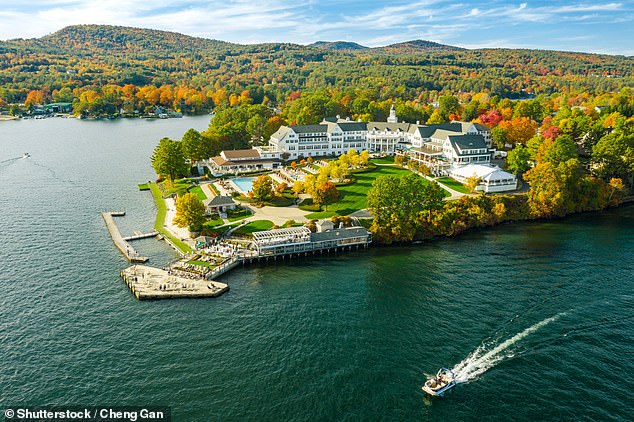
Annabelle stops at Lake George (see above). “Stretching for more than 50km, its shores are dotted with small resorts and palatial mansions, dating back to when the lake was a summer playground for millionaire industrialists of the Gilded Age,” she writes.
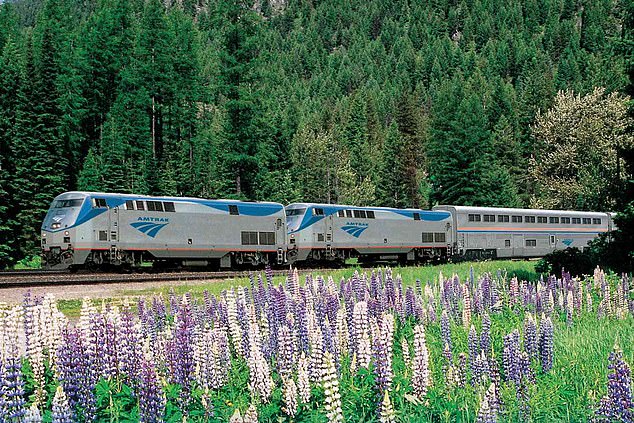
The Amtrak train (pictured) was closed over the summer for track renovations, but is now running again, Annabelle reveals
Shop windows are lined with hunting and fishing paraphernalia, but it is the Olympic heritage that defines the town, from the two ski jumps towering above it to the gleaming Olympic Centre housing the recently renovated museum. Interactive exhibits offer a (virtual) chance to experience the thrill of a bobsleigh race or ski jump at breakneck speeds. At the ski jump park itself, the chairlift whisks visitors up to the 120-metre-high platform from which skiers launch themselves.
The next day, I take a walk along the shoreline of Saranac Lake, famous for its art galleries, and visit High Falls Gorge, where four waterfalls converge and cascade over rocks. Observation platforms offer the chance to get up close to the rushing waters and get a little wet.
After four days of exploring, I return to Plattsburgh to board the train again. It’s dusk as we inch our way toward Canada, and we make a two-hour stop at the border, where the police check everyone’s passports. An hour later, the imposing Montreal skyline appears before my eyes, the illuminated towers twinkling in the gloom. At the city’s Gare Centrale, I feel as if I’ve stepped through a looking glass: suddenly, everyone speaks French.
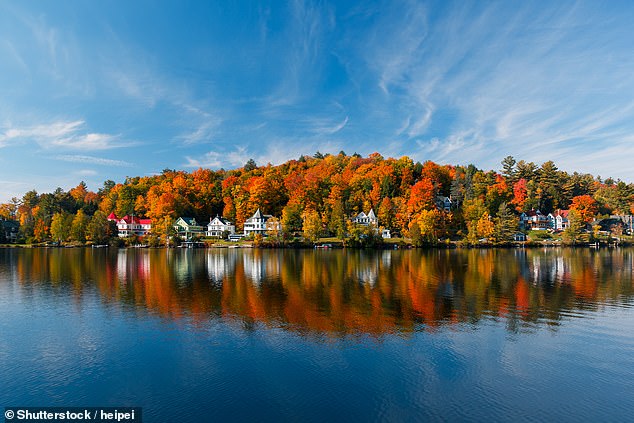
Annabelle takes a walk around Saranac Lake, famous for its art galleries.
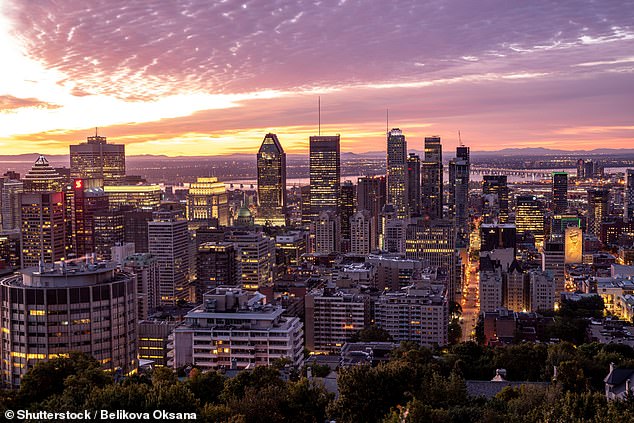
Arriving in Montreal (pictured), Annabelle admires its “sparkling” panorama
The next morning, Daniel, a local guide, takes me around the Mile End district via some famous foodie stops, from the legendary Fairmount Bagels (12,000 baked a day) to La Cornetteria for ricotta-filled cannelloni and the Jean-Talon Market, home to specialist local producers and farm stands.
It’s a delightful introduction to Canada’s multicultural city, where French and English can be exchanged alongside Italian, Portuguese and many other languages.
On my final day, I take the metro to Old Montreal, where buildings look like they’re straight out of rural France, a legacy of the city’s colonial past. Shops selling Inuit sculptures and paintings of snowy landscapes make me wish this was just another stop on my journey. Instead, the return flight beckons, 400 miles and a desert away from where I started.


